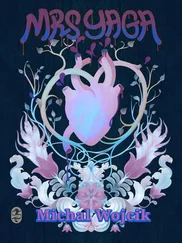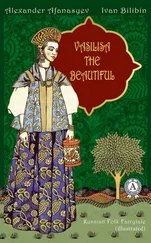Mythical beings are distinguished from humans by their physical size: they are significantly smaller or larger than people. In Istria, [21] Istria is a triangular peninsula on the northern coast of Croatia.
they believe that the plague is a gigantic woman. According to Serbian beliefs, the witch called karakondžula is a large fat creature. In Montenegro, they used to believe that Mother Wednesday was an enormous female, ‘wide as a haystack’, with great bosoms, grey hair and steel teeth.
Like other mythical beings, witches have some kind of physical defect,which may be expressed as a surplus, a deficiency or an imbalance. It is sometimes believed of witches that they have a rudimentary tail, or even rudimentary wings. Slovenian folklore mentions preglavica, a headless woman in white who only appears at midday. Her Russian counterpart is called poludnitsa. The Croats believed in faceless female demons: dead mothers coming back to give suck to their babies. Great dangling dugs are not reserved to Baba Yaga alone. The Serbs used to believe in the existence of the giant mother (divska majka) who would knead dough with her breasts. The kuga in Konavle [22] Konavle is a valley at the southern end of Croatia.
and the koljara in Montenegro have great dangling dugs that they can sling over their shoulders. The goddess Kshumai (worshipped by the Kaffirs of the Hindu Kush), the mythical peri (Farsi: pari ) and the Arabic salauva – they all have the same traits. Alavardi (also Alabasti) is an immemorial mythical being familiar to many Asiatic peoples. She is a tall woman with pendulous breasts that she tosses over her shoulders.
Witches may have only one eye and no nostrils, or only one nostril. One of Baba Yaga’s legs is made of bone (or iron). Blindness or monocular vision is typical of mythical beings. Baba Yaga is blind (or grumbles that her eyes hurt). She identifies her ‘guests’ – random passing travellers – by their human scent, because, as far as we know, she cannot see them.
Mythical beings give themselves away by the noises they make (they whistle, laugh, clap their hands, etc.). If a human catches their attention, certain mythical creatures will repeat the human’s words over and over, like an echo. Baba Yaga uses repetitious phrases and can be recognised by her remarkable wheezing breath: ‘Oof… oof… oof.’ Many of those attributes – specifically ‘noisiness’, hand-clapping, whistling, repeating words (echolalia) – could be put down to autism, while simple infirmity, difficulties with walking, blindness and dementia were due to sheer old age. In folklore, however, such longevity has been crowned with a mythic halo. This is why it is believed that witches live ‘for a very long time indeed’, longer than mere mortals, and ‘give up the ghost’ only with great difficulty. Baba Yaga herself is about a hundred years old. There is a folk belief that witches continue to do evil after they are dead. Therefore, when a witch dies, ‘it is worth slitting the tendons at their ankles and under their knees with a black-handled knife so that she will not return home from the grave and do people harm’. [23] The following observation may strike you as trite, but isn’t it interesting that commonplaces related to genocide are so rapidly forgotten? If nothing else, this is a reason why we need to keep reiterating that universal male misogyny, down the centuries, has produced cultural and symbolic genocide against women. One of the worst eruptions of this misogyny was the European inquisitorial witch-hunt that lasted practically for four centuries. The Inquisition began around the end of the 12th century and the beginning of the 13th, when Pope Gregory IX sent his inquisitors to the territories contaminated by heresy, and then officially entrusted the conduct of inquisitions to the Dominican order (1235). The congregation of cardinals was established fully in 1542, with legal authority over the inquisition. An estimated 100,000 witches were burned in Europe between 1560 and 1660, though the actual numbers are not known. The first trial of witches took place in Toulouse in 1335. After that, witch-hunting spread across Europe like a prairie fire, and 1486 brought the publication of the remarkable book by Kraemer and Sprenger, the Malleus Maleficarum . The inquisitors now had ideological underpinning: the first textbook which put their labours on ‘a solid scholarly foundation’. There are documents about the victims of inquisitorial torture: incomplete, to be sure, but they do exist. Moreover, many more women suffered outside the inquisitorial system. Their inquisitors were their neighbours, from the same village, motivated not so much by Christian obedience as by local beliefs and superstitions. Village women suspected of being witches were dunked in water. If they sank and drowned, it proved they were not witches. If they kept afloat, they were fished out of the water and beaten to death. Women believed to be witches were even defiled after death. Their bodies were penetrated with wooden poles and pierced with needles, or iron nails were driven into their mouths, and their graves were sown with poppy seeds (the dead woman would have to count each and every seed). The graves of suicides were treated in the same way.
In some areas of Slavic folklore, Baba Yaga is considered to be the ‘aunt of all witches’; elsewhere she is seen as the ‘mistress of all witches’, or even as ‘the devil’s sister’, while in Belarus, she has a difficult role to play: death delivers the souls of the deceased to Baba Yaga, and she and her underling witches have to feed these souls until they gain the requisite feathery lightness.
Remarks
Now we come to the first, and completely random, correspondences between your author’s manuscript and Baba Yaga. It is not without significance that the author gave one of her heroines, Pupa, a medical vocation: gynaecology. Midwives, sorceresses, healers, ‘witches’ all had an important and irreplaceable role in childbirth.
Although the physical appearance of your author’s heroines has no link with the aforementioned signs for recognising witches – otherwise every older woman could be a witch – let us mention some details anyway. The author’s mother wears a wig and often lets out a sort of groaning noise – uh-hu-uh-hu! Baba Yaga is well known for her puffing: Oof, oof, oof! Pupa has a beak-like nose, she is uncommonly thin, half-blind and highly sensitive to smells. Kukla has big feet. Beba has conspicuously large breasts and the little girl Wawa has eyebrows that meet in the middle.
By the way, in not-so-far-off times, all middle-aged women were bound to look like ‘witches’. Our own time is char ac terised by panic over ageing, obsessive efforts to delay and disguise the onset of old age. Fear of ageing is one of the strongest phobias among contemporary women, and increasingly among men as well. This very fear gives powerful impetus to the cosmetics industry. Naturally, the ‘anti-Baba Yaga’ industry feeds this fear and lives off and by it.
Hair removers help to keep our skin smooth: they lift the hairs from joined-up eyebrows, moustaches, whiskers from our chins, armpits and legs (no more shaggy thighs!), and the latest fashion is not only for removing the shameful hair but for styling it. Wigs, hair restoration and transplants have practically done away with female baldness. Dental implants have put a stop to toothlessness, and if they had been invented in the times when artists’ canvas overflowed with portraits of lovely ladies, their faces would have stretched in beaming grins; instead, they all had pursed lips or wore an enigmatic smile like the Mona Lisa. The cosmetics industry, the growth of plastic surgery, along with its increasing affordability: all this is changing the physical appearance of the inhabitants of the richer portions of the globe. The recent achievement of the first face transplant may stimulate a new appetite: for a total makeover, the transform ation of mortal ‘frogs’ into deathless ‘princesses’. The age-old belief that witches drink blood has turned, today, into the real and highly profitable practice of blood transfusion or replacement, a therapy that is widely believed to rejuvenate the organism and prolong life. Only rich people can indulge in such treatments, which they do in exclusive private clinics. The Astana cycling team from Kazakhstan and its star Aleksandr Vinokurov were asked to withdraw from the Tour de France in 2007 after Vinokurov tested positive for using blood transfusions as doping.
Читать дальше












